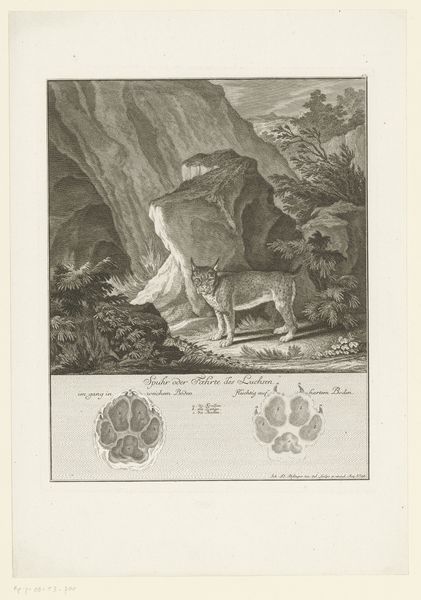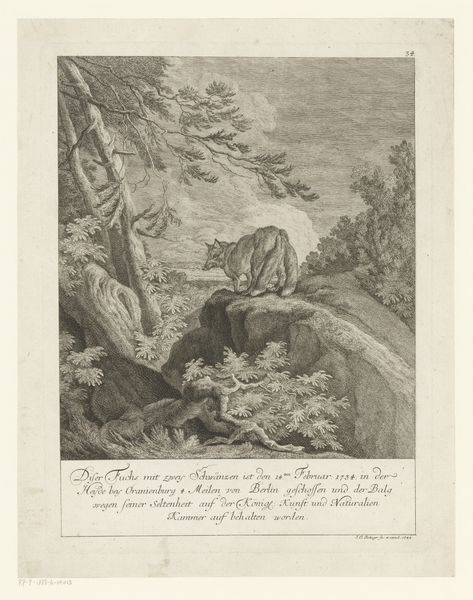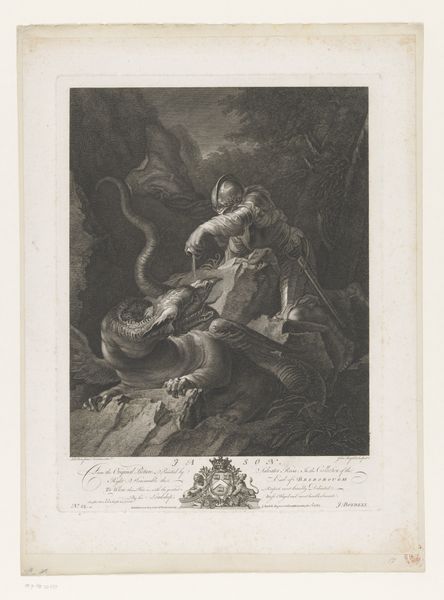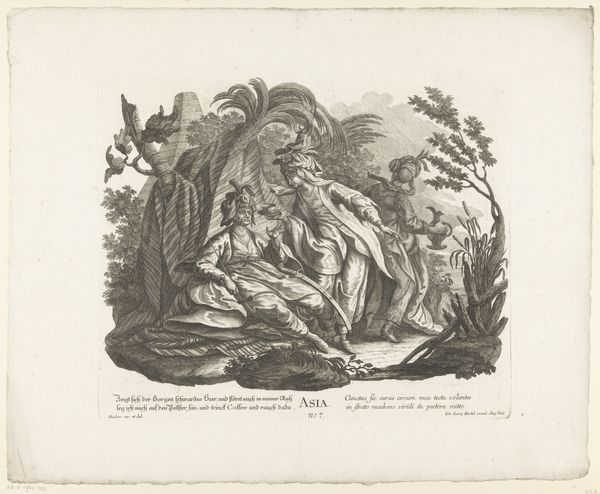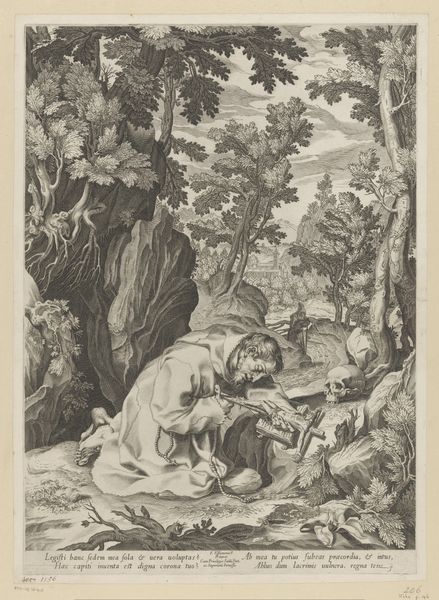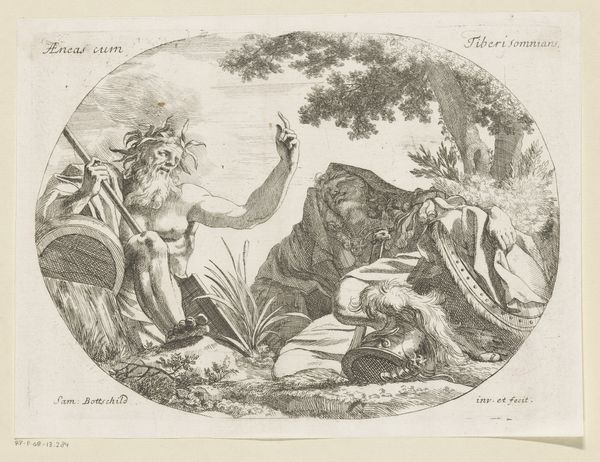
print, engraving
#
baroque
#
animal
# print
#
dog
#
old engraving style
#
landscape
#
figuration
#
personal sketchbook
#
forest
#
engraving
Dimensions: height 376 mm, width 298 mm
Copyright: Rijks Museum: Open Domain
Curator: Here we have "Deer Chased by a Hunting Dog," an engraving from 1742 by Johann Elias Ridinger, housed right here at the Rijksmuseum. Editor: My initial impression is a powerful sense of dynamic tension, emphasized by the contrast between the stag’s frenzied movement and the somewhat static rendering of the hound below. Curator: Ridinger, known for his detailed animal studies, situates this scene within a very specific cultural context—the aristocratic hunt. We can see the representation of power dynamics, with the deer symbolizing the wild, and untamed. But that is threatened by the social order represented by the hunting dog. Editor: Indeed, formally, observe the meticulous detail in the animal musculature versus the rougher texture of the rocky terrain. The lines create a certain chaotic visual tempo that draws the eye around the print. And those tight compositions really add a great deal to the feeling of, as I said before, the feeling of dynamic tension. Curator: Right. And it's important to note, engravings like these were not just art objects. They were part of a broader visual culture reinforcing social hierarchies. The suffering of the deer wasn’t just a depiction of nature but reflected a disregard of others within the dominant ideology. Consider it along lines of speciesism if you will. Editor: That's certainly an angle to consider. The landscape backdrop is far more than scenic, I think; rather, it's part of the design, and becomes symbolic—maybe it's just the representation of an interior state of anxiety of this poor deer. The interplay between light and shadow adds layers to its dramatic quality. Curator: Ultimately, it's an example of how even seemingly straightforward depictions of nature are embedded in socio-political meanings and we need to be willing to unearth that when we're looking at art, any kind of art. Editor: Yes. The way the lines interweave almost pulls you into a kind of spatial vertigo as you look at it, where the balance of observation of detail versus chaos really speaks volumes, even before considering your comments about the symbolism, which I agree are present as well.
Comments
No comments
Be the first to comment and join the conversation on the ultimate creative platform.







